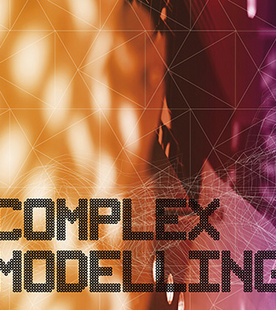Composite Territories
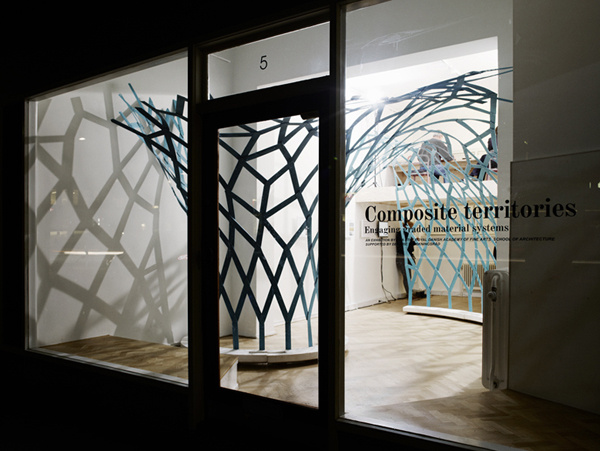
This project explores the use of fibre reinforced composites beyond their current framework. In addition to traditional qualities of lightness and strength, composites allow the graded specification and variation of their behaviour under loading. For architects and engineers, the implication is of a practice built around the precise specfication of material properties to meet specific local performance conditions - a new level of design operation in which global performance can be tailored at the material scale.
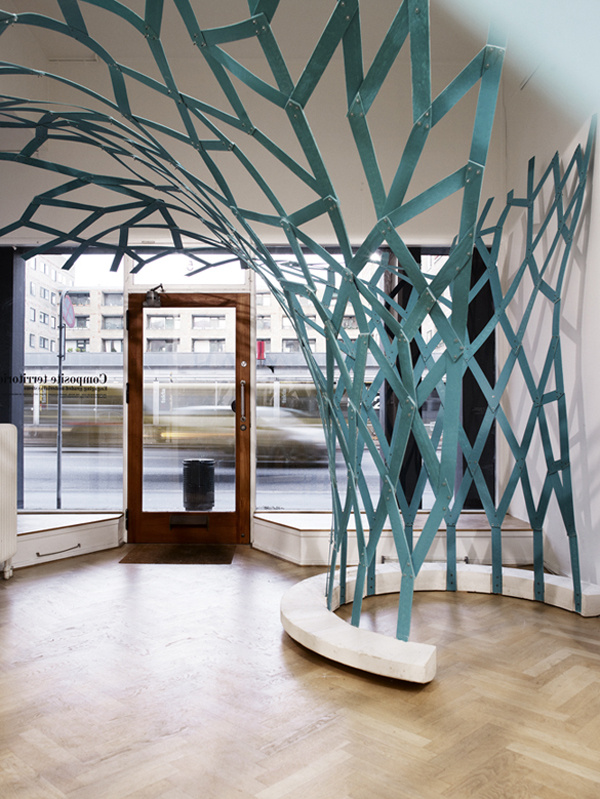
Composite Territories explores why architects might want to connect the design of material with the design of structures, and the predictive models that could support engagement with the relations between material, element and structure.
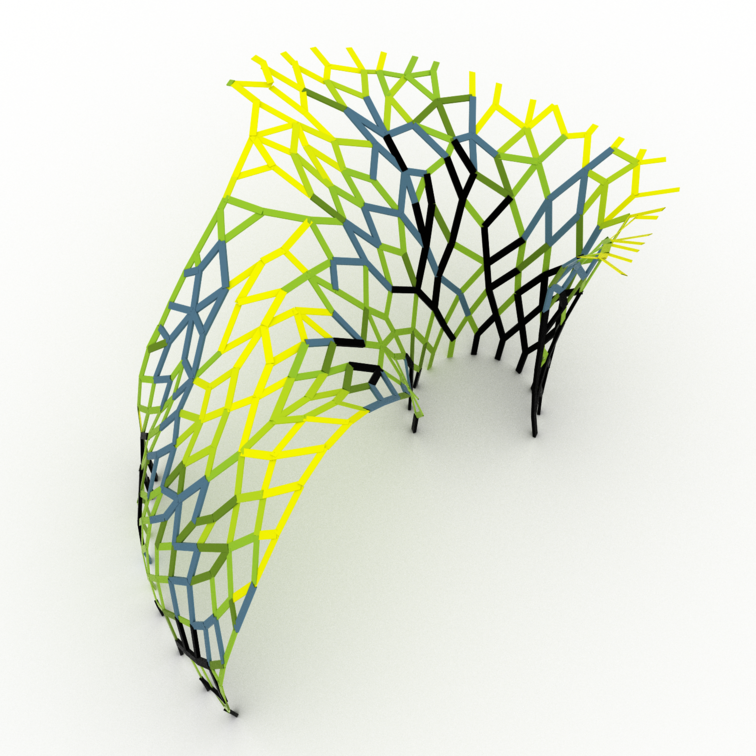
In the design of gridshell structures, 3D form is normally determined by the geometric complexity of the node. But by activating, specifying and varying the ability for GFRP to bend, a complex form can be linked instead to the material level and achieved with geometrically simple nodes and elements. To achieve this, the project links direct empirical testing with predictive digital modeling to connect global design intentions and behaviour to local variation of bending stiffness.

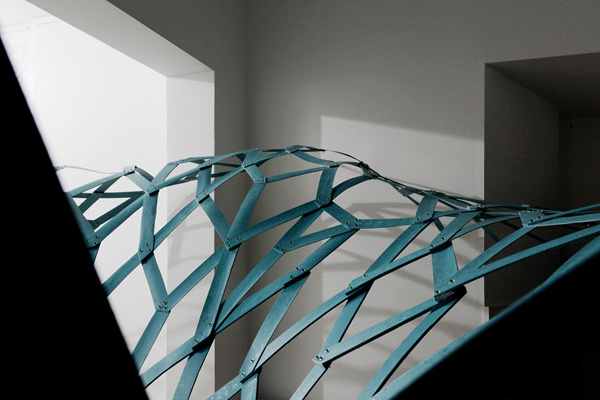

Venue
Composite territories was exhibited at ggggallery , Jan -March 2011.
This project is supported by
Det Frie Forskningsråd , as part of the 'Designing Material Materialising Design' PostDoc for Paul Nicholas
Photography
Anders Ingvartsen
Publications
Nicholas, P & Tamke, M.
"Composite Territories: Engaging a bespoke material practice in digitally designed materials"
In Proceedings of eCAADe, 2012
Tamke, M, Nicholas, P, Thomsen, M, Jungjohann, H & Markov, I.
"Graded Territories: Towards the design, specification and simulation of materially graded bending active structures"
In Proceedings of Acadia, 2012


